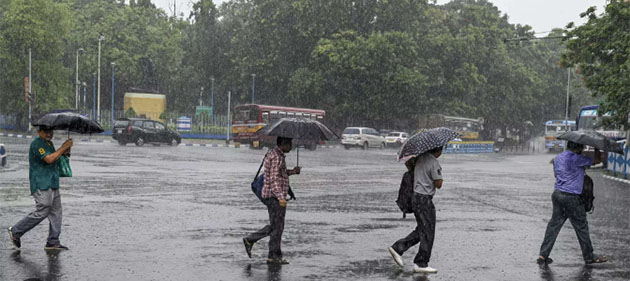
In a year marked by El Niño conditions, the southwest monsoon in India remained subdued to some extent, resulting in “below-average" cumulative rainfall, the India Meteorological Department (IMD) said on September 30, the date which formally marks the end of monsoon season in the country's mainland.
The cumulative rainfall in the four months of monsoon – June to September – amounted to 820 mm, which is lower than the long-period average (LPA) of 868.6 mm.
Rainfall activity ranging between 96 percent and 104 percent of the LPA is defined as normal. In 2022, India had recorded “normal" amount of cumulative rain, whereas, the overall precipitation in monsoon was “above-normal" in 2021.
According to the weather department, some “positive factors" mitigated some of the deficiency caused by El Niño conditions this year, which ended up providing “near normal" precipitation. These factors included the Indian Ocean Dipole (IOD) and Madden-Julian Oscillation (MJO), it said in a statement.
While the IOD is defined by the difference in the sea surface temperatures between the western parts of the Indian Ocean near Africa and the eastern parts of the ocean near Indonesia, MJO is a large-scale atmospheric disturbance originating in tropical Africa and travelling eastward, typically lasting 30 to 60 days. It is known for increasing convection in the Bay of Bengal and the Arabian Sea.
Addressing a press conference, IMD Director General Mrutyunjay Mohapatra said the 2023 monsoon season concluded with 94.4 percent cumulative rainfall, which is “near normal".
Normal rainfall is critical for India's agricultural landscape, with 52 percent of the net cultivated area relying on it. Additionally, it plays a crucial role in replenishing reservoirs essential for drinking water and power generation throughout the country.
Rainfed agriculture contributes to approximately 40 percent of the country's total food production, making it a vital contributor to India's food security and economic stability.
In a pre-monsoon briefing, the IMD had predicted a normal monsoon for India, albeit on the lower side of normal. It had, however, cautioned that El Nino might influence the latter half of the southwest monsoon.
However, normal cumulative rainfall over the country during the monsoon season also doesn't mean even spatial and temporal spread of precipitation.
The Indian monsoon refers to inherent fluctuations and changes that occur over time due to various natural factors. This is called natural variability.
Research, however, shows climate change is making the monsoon more variable. Increased variability means more extreme weather and dry spells.
The IMD chief said monthly rainfall across the country as a whole stood at 91 percent of LPA in June, 113 percent in July, 64 percent in August, and 113 percent in September.
"Out of the 36 meteorological subdivisions, three (constituting 9 percent of the total area) received excess rainfall, 26 received normal rainfall (covering 73 percent of the total area), and seven received deficient rainfall. The seven subdivisions with deficient rainfall are Nagaland, Manipur, Mizoram, and Tripura, Gangetic West Bengal, Jharkhand, Bihar, East UP, South Interior Karnataka, and Kerala," he said.
The IMD reported that east and northeast India recorded 1,115 mm of rainfall against a normal of 1,367.3 mm, which translates to an 18 percent deficit.
Northwest India recorded 593 mm of rainfall compared to a long-period average of 587.6 mm. Central India, where agriculture predominantly relies on monsoon rains, recorded 981.7 mm against a normal of 978 mm. The South Peninsula experienced an eight percent deficit.








Comments
Add new comment